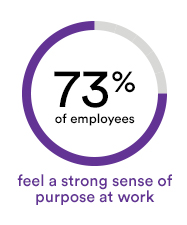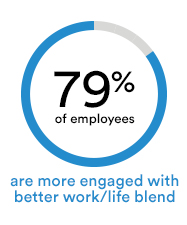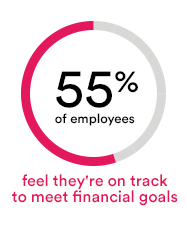In today’s competitive job market, company culture is definitely a new currency. Beyond a good salary, people seek work experiences that offer more human connections and better reflect their personal values. It’s a tall order — so how can companies deliver?
Here are three ways companies are creating healthy, vibrant work cultures that better engage their employees and impact the organization.
1. They focus on purpose.
For many people, their career choices are personal. MetLife’s 2018 Employee Benefit Trends Study found that 73% of employees feel a strong sense of purpose at work. “Employees today see work as a part of who they are and, therefore, want their work to reflect their values, interests, and aspirations,” the study shares.
Smart companies make purpose part of their overall culture. MetLife’s own Cindy Pace, Assistant Vice President of Diversity and Inclusion explains that “purpose is about being motivated and committed to contribute to something beyond your personal goals and ambitions, moving from ‘me to we’. When you know what intrinsically drives you and where you can best add value then ‘why’ you work becomes clear — allowing you to be focused on where you can make a difference in our business and the communities we serve.”
Airbnb offers a perfect example. The company slogan is “Belong Anywhere” and their leaders have been on a mission to align that purpose with their employees’ daily experience. The company revamped their Human Resources department into an “Employee Experience” team focused on creating a culture of belonging internally. The team created roles and functions that relate to an employee’s full journey within Airbnb including recruiting, onboarding, facilities, food, and professional development, according to Denise Yohn, author of Fusion: How Integrating Brand and Culture Powers the World’s Greatest Companies.
Yohn writes that the purpose of belonging infiltrates everything, from how the office is designed — homey, with kitchens, libraries and garden spaces — to organizing parties and celebrations based on places where Airbnb does business. These efforts not only help employees internalize the purpose of the company and feel like they belong there themselves, Yohn notes, but they also make it easier for employees to explain the brand values to others.
2. They deliver on work-life enrichment.
 Seventy-nine percent of employees say they’re more engaged when they have a better work-life blend, MetLife’s Employee Benefit Trends Study also reports. They’re more satisfied with their jobs, and more loyal to their employers.
Seventy-nine percent of employees say they’re more engaged when they have a better work-life blend, MetLife’s Employee Benefit Trends Study also reports. They’re more satisfied with their jobs, and more loyal to their employers.
How employers incorporate this blend as part of their culture varies. At Cisco, which Indeed named one of the top 5 best places to work for work-life balance, employees rave about the support they receive from their managers when it comes to flexible schedules and taking time off. Employees even get a paid day off for their birthday.
Healthcare consulting firm Vynamic is another company walking the work-life blend talk. CEO Dan Calista actually banned employees from sending emails between the hours of 10 p.m. and 6 a.m. He said that the idea isn’t to control when employees work — if they’re night owls, they can go for it. “Work when you want to work,” Calista explains, “Just don’t hit send on an email.” The policy ensures people don’t feel anchored to their phones at night and on the weekends — they can truly disconnect and know that they’re not missing anything.
3. They use benefits to empower employees and reduce stress.

Fun company perks like drinks on Fridays, free snacks, or in-house yoga can attract a lot of attention. But more than a keg in the office, employees want financial peace-of-mind. Only 55% of employees feel like they’re on track to meet their financial goals, and a growing percentage want their employers to help them address their financial concerns, MetLife’s study shows.
A comprehensive benefits package can help too. But some employers are going the extra mile to help their employees reduce financial stress. Pitt Ohio, a trucking company, set a goal for each of their employees to have a $1,000 emergency savings fund. The company executives started the initiative after realizing that financially stressed drivers were more distracted on the road. To give their employees a boost, the company gives $56 to employees who save $19 a month for six months, the Wall Street Journal reports. They can get another $56 payment after a second six months of savings. The program has proved hugely popular, with more than half of employees participating.
In today’s world, work and life are exceptionally intertwined. A great company culture means everyone can thrive professionally and personally.